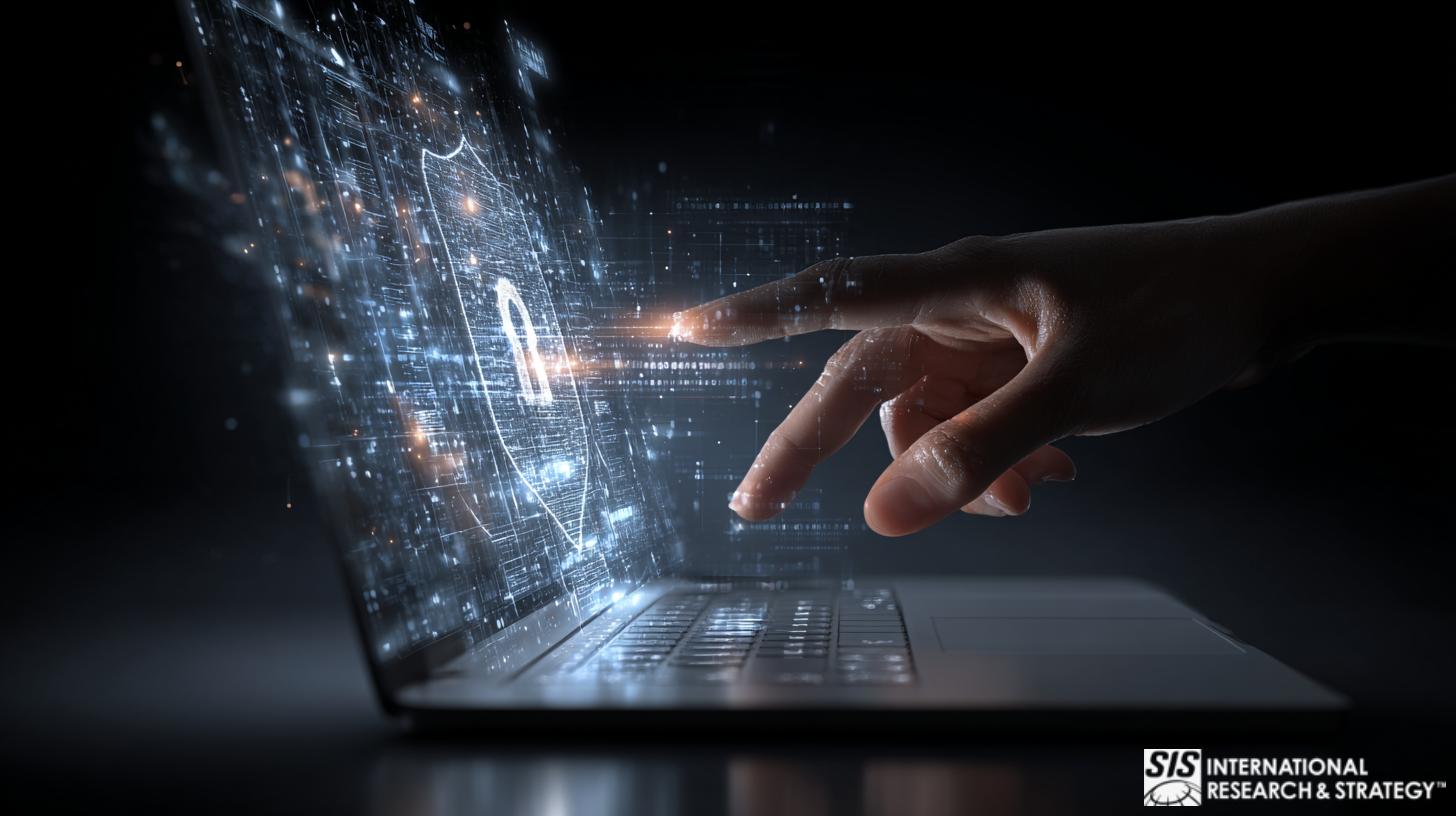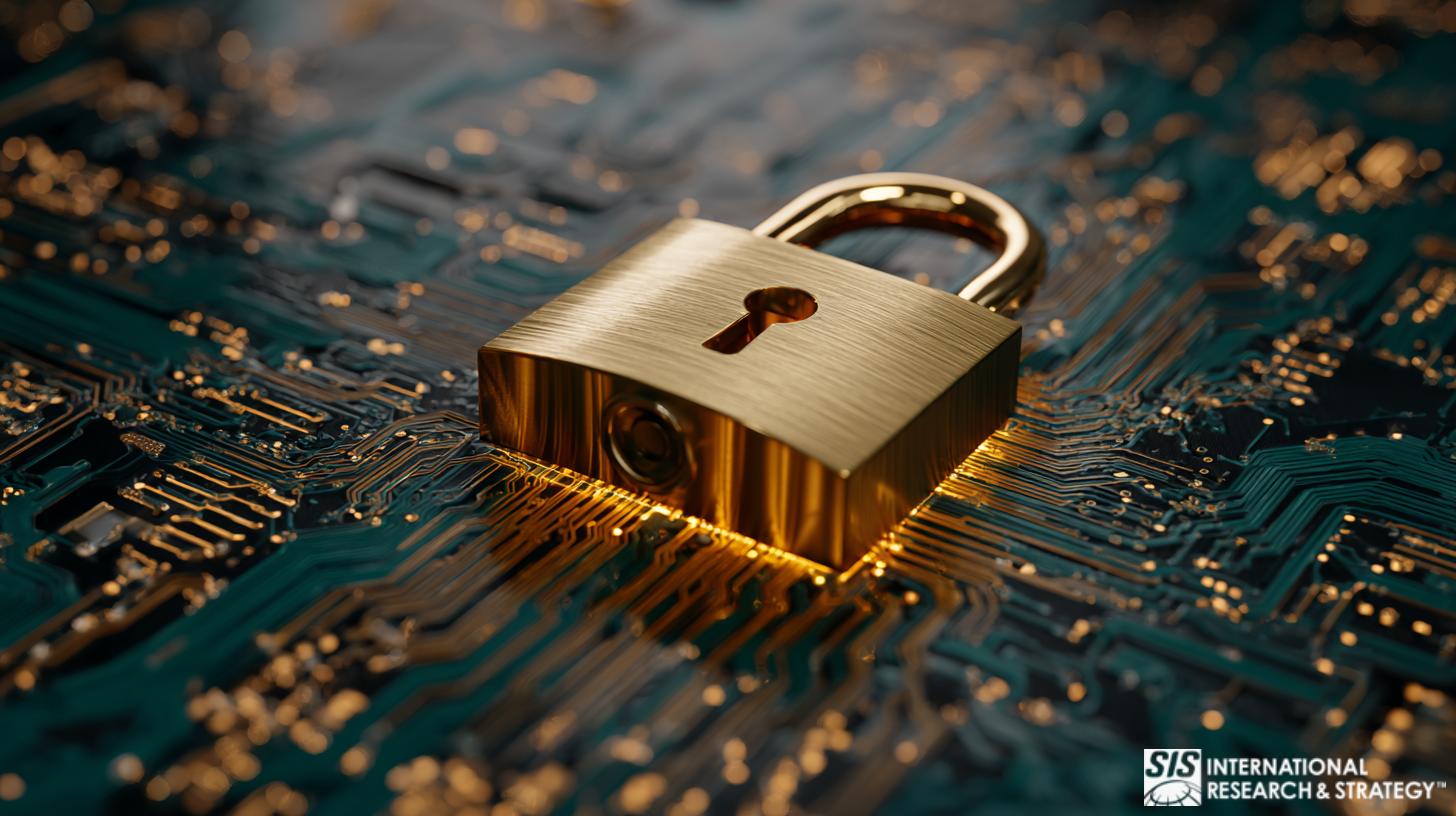
Un virus completamente diferente
Una breve descripción general de la batalla en curso para detener la marea de incursión cibernética en el sector de la salud.
In addition to subversive hacking in the business world, where private information can be compromised and sensitive company data absconded with, cybersecurity measures are now employed to negate the effects of hacking by foreign entities, used a political weapon. It is an increasingly serious global problem, and one that has necessitated the implementation of advanced cybersecurity methodologies to counteract the increasingly sophisticated capabilities of hackers to subvert these very systems.
“In recent years, cybersecurity has been a growing concern in healthcare, with high-profile cyber-attacks and vulnerabilities causing disruptions for insurers, hospitals, and medical device makers. The stakes for patients are high too as patient data could be lost or tampered with, hospital services interrupted, or patients harmed through attacks targeting specific devices … “ 1
Intervención gubernamental para combatir el cibercrimen
The rapid digitization of the healthcare industry makes this sector particularly vulnerable to cyber attack, and this fact has not been lost on the US Congress. The House Energy and Commerce Committee recently convened to address cybersecurity in the health sector. Information Sharing and Analysis Centers (ISACS) may be key in providing enhanced security for healthcare providers and in thwarting efforts of would-be cyber attackers.
Through the interactive efforts of the 24 organizations that comprise the National Council of ISACs (NCI), great efforts are being made to “maximize information flow across the private sector critical infrastructures and with government. Critical infrastructure sectors and subsectors that do not have ISACs are invited to contact the NCI to learn how they can participate in NCI activities.”2
It is, of course, a Herculean undertaking to strengthen the partnership between public and private entities in healthcare with regard to cybersecurity, considering the myriad industries and agencies of government that are responsible for regulating and delivering said healthcare. Congress has been encouraged to provide tax breaks and other incentives to prompt companies to get involved with the ongoing effort of ISACs.
La escasa participación impide la implementación de la seguridad cibernética
Unfortunately, poor participation rates among healthcare facilities have been a persistent problem in the ongoing efforts to implement effective cybersecurity measures across the sector. According to Terry Rice, vice president of IT risk management and chief information security officer at Merck, “companies may be hesitant to share information within an ISAC if they fear the information will not remain confidential to its members.”3
“I think the most shocking statistic was really the fact that 40% of the individuals at the top of an organization–executives like CEOs and CIOs, and even board members–didn’t feel personally responsible for cybersecurity or protecting the customer data.” Dave Damato, Chief Security Officer at Tanium, on CNBC’s Squawk Box, hablando de ciberseguridad en la industria sanitaria 13
El alto costo del cibercrimen en la atención médica

Aside from the obvious threat of compromised patient information and other incidents of data theft, failures of cybersecurity are incredibly expensive, to the tune of $6.2 billion annually, according to a 2016 research project conducted by the Poneman Institute. Insights revealed in their studies revealed that “nearly 90 percent of the healthcare organizations … had endured a data breach during the previous two years. Forty-five percent had more than five data breaches in that period, with the average cost of a cyber attack totaling $2.2 million. The data contained in electronic health records (EHRs) is often cited as the reason healthcare is such an attractive target in the eyes of a hacker.”4
As secure as people like to believe their health information is in the possession of their doctor’s office or hospital, it is often not the case. The ongoing digitization of health records has been an expensive proposition for the healthcare industry. Securing all that information is another monumental expense, and sometimes this part of the cybersecurity equation has been neglected in the interest of cost-savings, or just by the large-scale nature of the overall endeavor.
La naturaleza lucrativa del robo cibernético en la atención sanitaria
Of course, health records are a hot commodity on the black market, and they can fetch top dollar from parties seeking to obtain personal information, billing addresses, and credit card numbers. Hacking can be a very lucrative enterprise, indeed. Consider this example. “Hackers made off with more than 2.2 million patient records from Fort Myers, Florida-based 21st Century Oncology in March of 2016. A month later, someone stole a laptop with 205,748 unsecured patient records on it from Premier Healthcare, LLC.” 5
La llegada del ransomware
Ransomware es un término nuevo para la mayoría de las personas, que se familiariza con los recientes ataques WannaCry desatados a nivel mundial, que paralizaron sistemas de infraestructura críticos y provocaron importantes rescates financieros de quienes fueron víctimas de la ansiedad y la posible pérdida de datos características de dichos ataques. La industria de la salud en particular es vulnerable a las incursiones de ransomware.
“Los hospitales son el blanco perfecto para este tipo de extorsión porque brindan cuidados críticos y dependen de información actualizada de los registros de los pacientes. Sin un acceso rápido a los historiales farmacológicos, directivas quirúrgicas y otra información, la atención al paciente puede retrasarse o detenerse, lo que hace que los hospitales sean más propensos a pagar un rescate en lugar de arriesgarse a retrasos que podrían provocar la muerte y demandas judiciales”. 6
Ransomware malware, in effect, locks up a computer and makes data inaccessible unless a ransom is paid to the perpetrator. Usually, this payment is made in the form of Bitcoin. In most instances, a time limit is established for the ransom to be paid, otherwise the computers data will be destroyed. Though most stricken parties don’t pay the ransom, enough do to make it a particularly lucrative criminal enterprise.
The healthcare industry has been vulnerable to ransomware attacks because, surprisingly, many hospitals have taken inadequate steps to prevent cybersecurity breeches. Instead, most hospitals have focused their primary concern on meeting HIPAA compliance and meeting federal guidelines to ensure the security of patient information. Ultimately, most employees in healthcare are simply not trained well enough to recognize and thwart cyber attacks before they occur. Even when adequate training and cybersecurity measures are in place, it is a continuous challenge to outwit perpetrators who constantly remain one step ahead of the game.
Los dispositivos IoT también están en riesgo
To add a layer of seriousness to the present situation, cyber attacks can affect not only computers, but devices that are connected to them, as well. Medical tools, heart and glucose monitors are but a few examples of devices vulnerable to cyber attack. Vice-President Dick Cheney famously demanded that his pacemaker be made safe from cyber attack, lest those with ill-intent not manipulate the function of his device remotely. Quite frankly, interference with such devices can be deadly for the patients who depend on them to live.
Como ejemplo de piratería médica, “en un exploit que se utiliza actualmente, conocido como MedJack, los atacantes inyectan malware en dispositivos médicos para luego distribuirlos por una red. Los datos médicos descubiertos en este tipo de ataques pueden usarse para fraude fiscal o robo de identidad, e incluso pueden usarse para rastrear recetas de medicamentos activas, lo que permite a los piratas informáticos pedir medicamentos en línea para luego venderlos en la web oscura”. 7
“No patients have, as far as I know, been killed due to a hacked pacemaker, but patients have been killed due to malfunction[s] of their medical devices, configuration errors, and software bugs. This means that security research in the form of pre-emptive hacking, followed by coordinated vulnerability disclosure and vendor fixes, can help save human lives.” Marie Moe, investigadora de seguridad de SINTEF, en “Adelante, piratas informáticos. Romper mi corazón” (Cableado)13
La FCC ahora ha sugerido que los proveedores de dispositivos médicos de IoT incorporen medidas de seguridad en los productos que fabrican; la palabra clave que allí se sugiere. En realidad, instaurar prácticas y requisitos de seguridad obligatorios para esos fabricantes es un esfuerzo que requiere mucho tiempo. Además, las redes asignadas para transmitir datos entre dispositivos y bases de datos también tienen una necesidad crítica de implementación y monitoreo de la seguridad cibernética.
Un nuevo presidente, un nuevo orden
There was much speculation as to how the Trump administration would address issues of cybersecurity. On May 11, 2017, the president signed an executive order that mandated a review of the nation’s overall abilities to combat criminal cyber-activity. The order places the brunt of responsibility concerning cybersecurity on federal agencies which were to do risk assessments and turn in their respective reports within 90 days. Additional reports examining critical infrastructure risks were due six months after the president’s order was issued.
“La orden exige una revisión de la amenaza que representan las botnets, que se dirigen a sitios web con tráfico de spam generado automáticamente. El Red de bots Mirai fue responsable de importantes cortes de Internet el año pasado. Pero Access Now dice que la orden también debería abordar el proceso del gobierno para la divulgación de vulnerabilidades y su respuesta a las violaciones de datos”.
There is no overall preventative measure or measure that can eliminate the risk of cyber attacks. Rather, hospitals, clinics, and private practices can only hope to work together and manage the continuous risks in the interest of protecting the private information and the general safety of their patients. Concurrently, continuous technological advancements will hopefully address the vulnerability of medical devices and computer networks.
Este esfuerzo por frenar los efectos potencialmente desastrosos del delito cibernético en el sector de la salud y más allá se extiende mucho más allá de los Estados Unidos. Actualmente se está llevando a cabo un esfuerzo global para detener la marea de ataques cibernéticos en todo el mundo, o al menos minimizar el impacto de lo que parece ser un esfuerzo interminable por parte de los ciberdelincuentes para infiltrarse en los sistemas de salud y causar estragos y extorsionar siempre que sea posible. , con cualquier fin nefasto.
Motivaciones políticas para los ciberataques

With the hostile political climate that exists between North Korea and virtually every other country in the civilized world, it is not surprising that the rogue nation has been cited as a probably offender in the recent WannaCry ransomware attacks, and other ill-willed endeavors undertaken for political reasons and for the purposes of financial extortion.
“Los investigadores de seguridad cibernética han encontrado pistas técnicas que, según dijeron, podrían vincular a Corea del Norte con el ciberataque global de “ransomware” WannaCry que... infectó más de 300.000 máquinas en 150 países. Symantec and Kaspersky Lab said … some code in an earlier version of el software WannaCry También había aparecido en programas utilizados por el Grupo Lazarus, que investigadores de muchas empresas han identificado como una operación de piratería dirigida por Corea del Norte”. 10
No todos los expertos creen que el ataque del ransomware WannaCry estuvo motivado por motivos financieros. Algunos, como Matthew Hickey, de la consultora cibernética británica Hacker House, creen que los perpetradores simplemente esperaban "causar el mayor daño posible". Este fue ciertamente el caso en los países más afectados por el ataque, incluidos India, Taiwán, Ucrania y Rusia.
Algunos, como el líder ruso Vladimir Putin, culparon a la NSA por lo que afirmó fue su papel en los ataques de ransomware WannaCry. Se cree que la tecnología WannaCry está “basada en una herramienta filtrada que aprovecha una falla de seguridad en Windows que parece originarse en la NSA. "Somos plenamente conscientes de que los genios, en particular los creados por los servicios secretos, pueden dañar a sus propios autores y creadores, si se les deja salir de la botella", dijo Putin en Beijing. según el servicio de noticias estatal ruso, Tass.” 11
“This next president is going to inherit the most sophisticated and persistent cyber espionage cultures the world has ever seen, He needs to surround himself with experts that can expedite the allocation of potent layers of next-generation defenses around our targeted critical infrastructure silos.” James Scott, Senior Fellow, Institute for Critical Infrastructure Technology 14
Tendencias en la lucha contra la ciberincursión en el sector sanitario
Obviously, the threat of cybersecurity breaches across all sectors of business and industry will not abate. In healthcare, there will be an ongoing and incessant need to improve technology and overall vigilance to avoid disastrous incidents in the future. Certain protective trends are emerging that might be seen as the future of cybercrime deterrence in healthcare.
At the top of the list is an increasing migration to cloud-based information security tools. This move “will allow the tools to be updated more dynamically to address zero-day type malware. This move to the cloud should ultimately make it more economical to make these tools available to all healthcare providers – large and small.” 12
In addition, the healthcare industry will be forced to encourage increased information sharing and collaboration across health networks and between facilities. This mutual cybersecurity effort will be difficult to instigate as health institutions are often quite insular by nature. It is predicted that this sharing of information will reach beyond healthcare to include many sectors of business and institutional endeavors to minimize risks for all involved.
Ultimately, the effort to negate the dangers of cybersecurity breaches, ransomware, and new and emerging threats in this arena will come down to education and awareness on all employee levels in healthcare and beyond. When everyone is well-educated and made to see warning signs of cyber-risks and what they can do to be part of an overarching effort to stem the tide of cyber-incursion, the healthcare industry and all protectors of civilized information sharing around the globe will continue to make meaningful strides towards limiting the damaging effects of cybercrime in all sectors.
AI-Driven Website Security: WP Safe Zone for Healthcare
In the healthcare sector, where sensitive patient data is a prime target for cyberattacks, robust website security is critical. The rise of AI in cybersecurity is providing powerful solutions to combat these threats. One standout example is the WP Safe Zone plugin, tailored for WordPress websites.
WP Safe Zone utilizes artificial intelligence to protect websites from malware, brute force attacks, and unauthorized access. Its AI algorithms constantly monitor and adapt to emerging threats, ensuring real-time protection for healthcare organizations’ online platforms.
As cyber risks in healthcare continue to grow, tools like WP Safe Zone demonstrate how AI can safeguard critical systems, ensuring both data security and compliance with strict regulations.
Podemos ayudarle en su esfuerzo de seguridad cibernética
SIS International Research ha pasado décadas interactuando con la industria de la salud en muchos niveles, desde consultorios familiares independientes hasta redes de salud monolíticas y de múltiples niveles. Nuestra singular comprensión de los desafíos que enfrentan las empresas e instituciones en el sector de la salud no tiene paralelo. Proporcionamos investigación e inteligencia sobre las partes interesadas[/fusion_text][fusion_text]
Nuestras soluciones incluyen:
Hoy, con la complejidad añadida de la amenaza impuesta por la creciente ciberdelincuencia dirigida a nuestras instituciones sanitarias más veneradas y a los pacientes a los que atienden, consideramos nuestro papel con el más alto grado de seriedad. Como empresa que se enorgullece de comprender la importancia y la naturaleza multifacética de la industria de la salud, continuaremos prestando servicios a prácticas, instalaciones y organizaciones relacionadas con la salud con las mismas capacidades de investigación integrales y de alta calidad a las que nuestros clientes han llegado. esperar y exigir. De esta manera, esperamos hacer nuestra parte para ayudar a la comunidad médica a comprender y combatir la amenaza muy real y grave de los ciberataques en el sector de la salud.
En la elaboración de esta investigación se utilizaron los siguientes recursos:
http://www.raps.org/Regulatory-Focus/News/2017/04/04/27267/Cybersecurity-House-Committee-Looks-to-Build-on-Public-Private-Partnerships/#sthash.x4Xvdf6q.dpuf
https://www.nationalisacs.org/
http://www.raps.org/Regulatory-Focus/News/2017/04/04/27267/Cybersecurity-House-Committee-Looks-to-Build-on-Public-Private-Partnerships/#sthash.x4Xvdf6q.dpuf
https://learningnetwork.cisco.com/blogs/talking-tech-with-cisco/2017/03/21/cybersecurity-and-healthcare-a-forecast-for-2017
https://learningnetwork.cisco.com/blogs/talking-tech-with-cisco/2017/03/21/cybersecurity-and-healthcare-a-forecast-for-2017
https://www.wired.com/2016/03/ransomware-why-hospitals-are-the-perfect-targets/
https://www.wired.com/2017/03/medical-devices-next-security-nightmare/
https://techcrunch.com/2017/05/11/trump-signs-long-delayed-executive-order-on-cybersecurity/
http://www.healthcareitnews.com/news/top-10-cybersecurity-must-haves-2017
http://www.dingit.tv/highlight/1441974?utm_source=Embedded&utm_medium=Embedded&utm_campaign=Embedded
www.healthcareitnews.com/blog/3-trends-shaping-future-cybersecurity
https://www.forbes.com/sites/danmunro/2016/12/18/top-ten-healthcare-quotes-for-2016/#5f47fb6b127f
http://www.goodreads.com/quotes/tag/cyber-security



